Cihan Geyik
Go To Market
5
min read
Apr 23, 2025
The Ultimate Guide to Choosing the Best Prospecting Tools
Navigating the ever-expanding landscape of prospecting tools can feel overwhelming. With countless options promising to revolutionize your sales process, how do you cut through the noise and identify the solutions that will genuinely drive results for your specific business needs? Choosing incorrectly can lead to wasted investment, frustrated sales teams, and missed opportunities.
This guide is built on practical experience and industry knowledge to provide a comprehensive framework for selecting the best prospecting tools. We'll focus particularly on the impact of AI-powered solutions, the role of sales enablement platforms, and effective digital engagement strategies. Whether you're a seasoned sales leader refining your tech stack, a sales enablement professional empowering your reps, or a founder building your prospecting strategy from scratch, this resource will equip you to make informed decisions.
Our goal is to help you understand key features, benefits, and crucial considerations for various tool categories, enabling you to build a prospecting tech stack that boosts efficiency, improves conversion rates, and ultimately fuels sustainable business growth by connecting your team with the right prospects, at the right time, with the right message.
Defining Your Prospecting Needs: The Critical Foundation
Before even looking at a single tool demo, the most crucial step is internal analysis. Jumping into tool selection without a clear understanding of your needs is a recipe for poor ROI. Ask yourself and your team:
What specific challenges are we trying to solve? Where are the biggest bottlenecks in our current prospecting workflow? (e.g., time spent on manual research, inconsistent lead quality, difficulty personalizing outreach, scattered data).
Who is our Ideal Customer Profile (ICP)? Be precise. Document the firmographic (company size, industry, location), technographic (technologies they use), and behavioral characteristics (engagement signals, job changes) of your best customers. This definition is fundamental, especially for leveraging AI effectively.
What are our measurable goals? What does success look like? Are we aiming to increase Marketing Qualified Leads (MQLs) or Sales Qualified Leads (SQLs) by X%? Shorten the sales cycle duration? Improve lead-to-opportunity conversion rates? Reduce the cost per acquired lead? Having clear Key Performance Indicators (KPIs) will guide your selection and allow you to measure impact accurately.
Only once you've clearly defined your problems, your target audience, and your success metrics can you effectively evaluate tools based on their ability to meet these specific requirements.
The AI Revolution in Prospecting: Working Smarter, Not Harder
Artificial intelligence isn't just hype; it's fundamentally reshaping sales prospecting. As noted by McKinsey & Company, AI is poised to disrupt sales across sectors, with early adopters seeing significant revenue and ROI benefits. AI-powered tools automate tedious tasks, uncover deep insights, and enable levels of personalization previously impossible at scale.
Here’s how AI is making a tangible difference:
Smarter Lead Identification & Scoring: AI algorithms sift through vast datasets (CRM, web activity, social media, third-party intent data) to pinpoint prospects matching your ICP with remarkable accuracy. Predictive lead scoring goes beyond simple demographics, forecasting conversion likelihood, and helping teams prioritize high-potential leads.
Hyper-Personalization at Scale: Forget basic
[First Name]tokens. AI analyzes prospect data (LinkedIn posts, company news, role responsibilities, shared connections) to generate highly relevant, personalized outreach messages, email sequences, and even dynamic video content (using tools like Maverick). This deeper personalization demonstrably increases engagement. Natural Language Generation (NLG) helps craft emails and scripts that sound human, not robotic.Intelligent Automation: AI takes over time-consuming, repetitive tasks like data entry, prospect research, activity logging, scheduling, and follow-up reminders. This frees up significant seller time (often hours per week) for strategic activities like building relationships, conducting discovery calls, and closing deals. Some advanced platforms offer autonomous agents capable of managing entire outreach workflows.
Predictive Analytics & Forecasting: By analyzing historical sales data and market trends, AI can predict pipeline velocity, identify deals at risk, and forecast sales outcomes with greater accuracy than traditional methods. This enables more informed strategic planning and resource allocation.
Data-Driven Insights & Optimization: AI analyzes sales activities, call recordings (via Conversation Intelligence tools), and campaign performance data to reveal patterns and insights – what messaging resonates? Which channels are most effective? Which reps need coaching? This allows for continuous, data-backed optimization of your prospecting strategies.
Key Categories of Prospecting Tools: Building Your Toolkit
The market offers diverse solutions. Understanding these primary categories helps you build a cohesive and effective tech stack:
Lead Identification & Data Enrichment Tools: These are often the starting point, finding who to contact. They provide access to extensive B2B databases, often with advanced filtering capabilities. Crucially, they also offer data enrichment features to append missing information (verified emails, direct dials, company size, funding data, location) to your existing records or newly found leads. Examples range from broad databases like Seamless.ai to platforms like Empler AI, which emphasizes leveraging real-time data scraping from billions of public profiles to find prospects based on granular criteria, enrich contact details, and facilitate connection building (e.g., via LinkedIn).
Sales Intelligence & Intent Data Platforms: These tools provide the context, understanding of why and when to reach out. They track buying signals, such as companies actively researching solutions like yours (intent data), visiting your website, posting relevant job openings, announcing funding rounds, or experiencing other trigger events. They also offer insights into competitor activities and a company's technology stack. Empler AI, for example, incorporates features for monitoring target company websites and social media for changes, identifying technology usage, and leveraging these signals for timely, relevant outreach.
Outreach & Sales Engagement Automation Tools: Once you know who to contact and why, these tools help you engage efficiently across multiple channels (email, phone, social media). They automate email sequences, manage tasks, track engagement, and often incorporate A/B testing and AI-driven personalization suggestions. Popular examples include Reply.io, Outreach, Salesloft, and HubSpot Sales Hub. Platforms like Empler AI often integrate directly with these tools (e.g., Instantly, La Growth Machine), allowing AI agents to push enriched, qualified contacts into predefined outreach sequences seamlessly.
Sales Enablement Platforms: These platforms focus on equipping sellers with the content, training, and coaching needed to be effective throughout the sales cycle, including prospecting. Features often include centralized content management (making it easy to find the right case study or battle card), just-in-time learning modules, AI-powered call analysis and coaching simulations, and conversation intelligence. Allego is a well-known player in this space.
AI Assistants & Agentic Automation Platforms: This cutting-edge category features AI agents designed to autonomously handle complex, multi-step prospecting workflows. These agents can orchestrate tasks across different tools – performing research, enriching data, filtering leads against ICP criteria, drafting personalized messages, and updating the CRM, all based on predefined goals and instructions. Nooks AI and Artisan's Ava are examples. Empler AI positions itself within this category, specifically for Go-To-Market (GTM) challenges, utilizing a multi-agent framework where specialized AI agents collaborate using various integrated tools (web scraping, data enrichment APIs, LLMs like GPT-4) to execute complex prospecting workflows end-to-end.
Evaluating Prospecting Tools: Critical Factors for Success
Knowing the categories is one thing; choosing the right tool requires rigorous evaluation. Focus on these critical factors:
Functionality & Feature Alignment: Does the tool directly solve the core problems you identified? Don't get distracted by flashy features you don't need. Map features directly to your use cases and KPIs. Pro Tip: Prioritize features that address your biggest bottlenecks first.
Data Quality & Accuracy: For any tool providing contact or company data, this is paramount. Inaccurate or outdated data wastes valuable seller time, damages your sender reputation, and leads to ineffective outreach. Ask vendors detailed questions about their data sources, verification processes, update frequency, and compliance measures. Tools like Empler AI often highlight real-time data sourcing as a key differentiator against static databases. Remember Gartner's finding that poor data quality costs organizations millions annually – this is not an area to compromise on.
Integration Capabilities: Your prospecting tools must work seamlessly within your existing ecosystem. Prioritize tools with robust, native integrations with your CRM (e.g., Salesforce, HubSpot), marketing automation platform, sales engagement tools, and potentially communication platforms (like Slack or Teams). Check for API availability for custom connections if needed. A fragmented system creates data silos and inefficiency. Empler AI, for instance, emphasizes its wide range of integrations as core to its agentic workflow capabilities.
Usability & Team Adoption: Even the most powerful tool is worthless if your sales team finds it confusing or cumbersome. Look for an intuitive user interface, clear workflows, and minimal friction. Crucially, involve your end-users (the sales reps who will use the tool daily) in the evaluation process. Get their feedback on usability during demos and trials. Salesforce research highlights that user confidence and ease of use are major factors in AI tool adoption.
Scalability & Future-Proofing: Select tools that can grow alongside your business. Consider future needs regarding the number of users, contact volume limits, feature requirements, and potential international expansion. Assess the vendor's product roadmap and commitment to innovation, especially regarding AI advancements.
Security & Compliance: Protecting prospect and company data is non-negotiable. Verify the vendor's security certifications, data encryption practices, and compliance with relevant regulations like GDPR, CCPA, etc. Ensure they have clear data processing agreements.
Customer Support & Training: Especially when implementing new technology, reliable support is vital. Evaluate the vendor's support channels (phone, email, chat), responsiveness, quality of training materials (documentation, webinars, tutorials), and onboarding process. Look for customer reviews regarding support quality.
Pricing & ROI: Understand the complete pricing structure (per user, usage-based tiers, implementation fees, contract length). Ensure it aligns with your budget. More importantly, calculate the potential Return on Investment (ROI). How will this tool help you achieve the KPIs you defined earlier (e.g., time saved, increase in qualified meetings booked, higher conversion rates)? Build a business case based on expected value, not just cost.
Building Your Integrated Prospecting Tech Stack
The goal isn't to find a single "magic bullet" tool, but to build an integrated tech stack where specialized tools work together harmoniously. Aim for a combination that covers:
Finding & Enriching: Identifying the right accounts and contacts (Lead ID & Enrichment).
Understanding Context: Knowing why and when to reach out (Sales Intelligence & Intent).
Engaging Effectively: Executing multi-channel outreach efficiently (Outreach & Engagement).
Analyzing & Optimizing: Measuring performance and improving strategy (CRM, Analytics, potentially Conversation Intelligence).
Consider platforms that can act as an orchestration layer. For example, an Agentic Automation platform like Empler AI could be configured to:
* Use its agents to identify prospects matching a complex ICP from its database or external sources.
* Enrich these prospects using integrated tools (like Apollo.io) or its own functions.
* Filter them based on real-time signals or CRM data.
* Generate highly personalized opening lines using advanced LLMs (like GPT-4 or Claude).
* Push the qualified, enriched, and personalized leads into a sales engagement platform (like La Growth Machine) or directly update your CRM (Salesforce, HubSpot).
This creates a streamlined, automated workflow, freeing up reps to focus on high-value interactions.
Conclusion: Empowering Your Team for Growth
Selecting the right prospecting tools is a strategic imperative, not just an IT decision. It's an ongoing process of evaluation, adaptation, and optimization, especially given the rapid pace of technological change, particularly in AI.
Embrace a mindset of continuous improvement. Test new tools and approaches (start with pilot programs), rigorously measure their impact against your KPIs, and refine your tech stack accordingly. Remember, technology is an enabler, but the human element – the skill, creativity, and relationship-building abilities of your sales team – remains paramount.
By thoughtfully combining the power of modern prospecting tools, especially AI-driven solutions, with a well-trained and motivated sales team, you can build a powerful, efficient, and data-driven prospecting engine that consistently delivers qualified opportunities and fuels sustainable business growth.
Sources & Further Reading:
Allego Blog: https://www.allego.com/blog (Sales Enablement & Coaching Insights)
Artisan.co Blog: https://www.artisan.co/blog (AI Sales Agent Perspectives)
Empler AI: https://www.empler.ai/ (Agentic Automation for GTM)
Maverick Blog: https://www.trymaverick.com/blog (AI-Personalized Video Outreach)
HubSpot Blog: https://blog.hubspot.com/sales (General Sales & CRM Strategy)
Salesforce Blog: https://www.salesforce.com/blog/ (CRM, AI, and Sales Trends)
Gartner: https://www.gartner.com/en/topics/sales (Industry Research & Data Quality Importance)
McKinsey & Company: https://www.mckinsey.com/capabilities/growth-marketing-and-sales/our-insights (AI Impact on Sales & Revenue)







